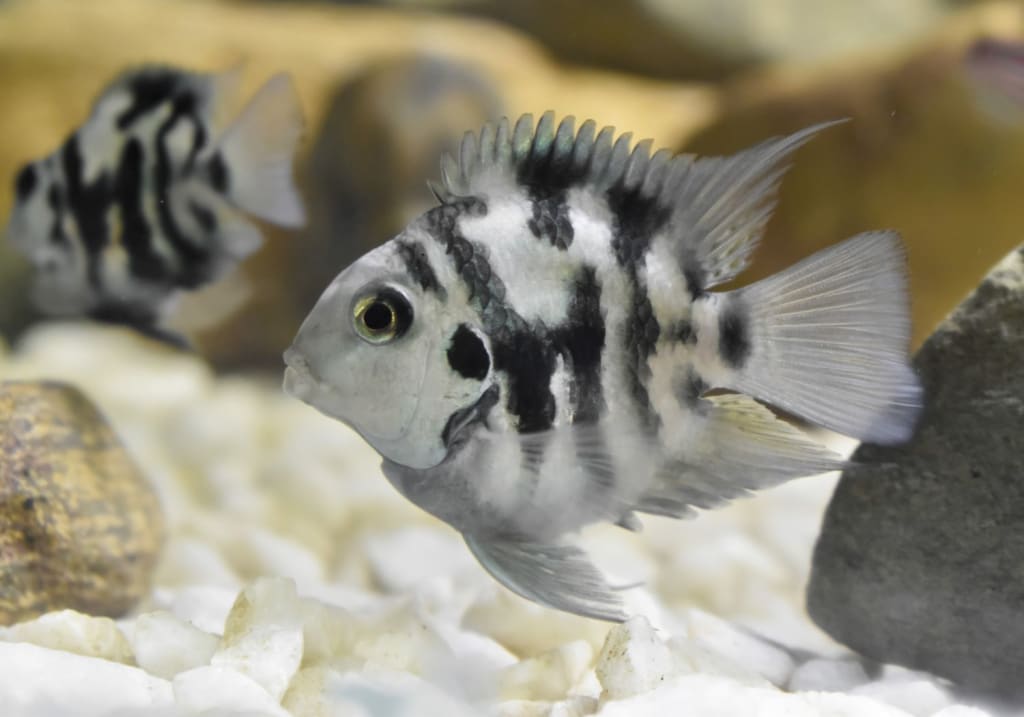How to Choose the Best Fish Tank
Substrate for Your Aquarium

A Comprehensive Guide to Selecting the Perfect Substrate for Your Fish Tank
When setting up a new aquarium, choosing the right substrate is a crucial decision that can greatly impact the health and well-being of your fish. The substrate, which covers the bottom of the tank, not only contributes to the overall aesthetic of your aquarium but also plays a vital role in maintaining water quality and providing a suitable environment for your aquatic inhabitants.
With so many options available, from gravel and sand to specialized substrates, it can be overwhelming to determine which one is best for your particular setup. In this comprehensive guide, we'll explore the various types of fish tank substrates, their benefits, and how to select the most suitable one for your aquarium.
Understanding the Importance of Substrate in an Aquarium
The substrate in your fish tank serves several important functions:
- Biological filtration: The substrate provides a large surface area for beneficial bacteria to colonize, which helps break down waste products and maintain a healthy nitrogen cycle.
- Anchoring plants: Many aquatic plants require a substrate to root in, providing them with stability and nutrients.
- Aesthetic appeal: The substrate contributes to the overall visual appeal of your aquarium, allowing you to create a natural-looking environment for your fish.
- Burrowing behavior: Some fish species, such as corydoras catfish and certain invertebrates, enjoy burrowing into the substrate. Providing a suitable substrate allows them to exhibit their natural behaviors.
- Water chemistry: Certain substrates, like crushed coral or aragonite, can help buffer the water and maintain a stable pH level.
Types of Fish Tank Substrates
There are several types of substrates available for aquariums, each with its own unique characteristics and benefits. Let's explore the most common options:
Gravel
Gravel is one of the most popular and widely used substrates for aquariums. It comes in a variety of sizes, colors, and textures, making it a versatile choice for many aquarium setups. Gravel is relatively inexpensive, easy to maintain, and provides a stable surface for plants to root in.
However, gravel can be challenging to clean, as debris and uneaten food can accumulate between the small stones. It's also important to choose a gravel size that is appropriate for your fish species, as some may be prone to ingesting smaller gravel particles.
Sand
Sand is another popular substrate choice, particularly for marine and planted aquariums. It provides a smooth, natural-looking surface that is easy to maintain and clean. Sand also allows certain fish species, such as rays and flatfish, to exhibit their natural burrowing behaviors.
One potential drawback of sand is that it can compact over time, which can lead to anaerobic pockets and potential water quality issues. To prevent this, it's essential to regularly stir the sand or use a substrate vacuum during water changes.
Specialized Substrates
In addition to gravel and sand, there are several specialized substrates available for aquariums:
- Planted substrate: These substrates are designed specifically for planted aquariums, providing nutrients and minerals to support plant growth. They often contain a mix of materials like clay, peat, and volcanic rock.
- Soil-based substrates: Some aquarium enthusiasts use soil-based substrates, such as aquarium soil or potting soil, to create a natural-looking environment for their fish and plants. These substrates can provide a rich source of nutrients but may require more maintenance to prevent water quality issues.
- Aragonite and crushed coral: These substrates are commonly used in marine aquariums or for fish species that prefer a higher pH. They help buffer the water and maintain a stable pH level.
- Fluorite and Eco-Complete: These are two popular brands of specialized substrates that are designed for planted aquariums. They provide a nutrient-rich environment for plants while maintaining a stable water chemistry.
Factors to Consider When Choosing a Fish Tank Substrate
When selecting a substrate for your aquarium, consider the following factors:
- Tank size: The size of your aquarium will determine the amount of substrate you need. As a general rule, you'll need about 1-2 inches of substrate for a standard aquarium.
- Fish species: Different fish species may have specific substrate preferences. For example, some fish may be prone to ingesting small gravel particles, while others may enjoy burrowing in the substrate.
- Aquarium plants: If you plan to keep live plants in your aquarium, choose a substrate that supports plant growth. Nutrient-rich substrates or those designed specifically for planted tanks are ideal.
- Water chemistry: Consider the water chemistry requirements of your fish species and choose a substrate that can help maintain a stable pH level if necessary.
- Maintenance: Some substrates require more maintenance than others. For example, sand may need to be stirred regularly to prevent compaction, while gravel can be challenging to clean.
- Budget: Substrates can vary in price, so consider your budget when making your selection. While specialized substrates may be more expensive, they can provide additional benefits for your aquarium.
How to Prepare and Maintain Your Fish Tank Substrate
Once you've selected the perfect substrate for your aquarium, it's important to properly prepare and maintain it to ensure the health and well-being of your fish.
Preparing the Substrate
- Rinse the substrate: Before adding it to your aquarium, rinse the substrate thoroughly under running water to remove any dust or debris.
- Layer the substrate: If you're using a planted substrate or a soil-based substrate, create a thin layer (about 1/2 inch) at the bottom of the tank. Top this layer with a thicker layer (about 1-2 inches) of your chosen substrate.
- Smooth the surface: Use your hands or a tool to smooth the surface of the substrate, creating a level surface for your aquarium decor and plants.
Maintaining the Substrate
- Perform regular water changes: Perform partial water changes (25-50%) every week to remove accumulated waste and maintain water quality.
- Use a substrate vacuum: During water changes, use a substrate vacuum to remove debris and uneaten food from the substrate. This helps prevent the buildup of harmful waste products.
- Stir the substrate: If you're using sand or a soil-based substrate, stir it gently with a tool every few weeks to prevent compaction and anaerobic pockets.
- Replace the substrate: Over time, the substrate may need to be replaced if it becomes heavily soiled or discolored. Follow the same preparation steps when adding new substrate to your aquarium.
Conclusion
Choosing the right fish tank substrate is an essential step in setting up a healthy and thriving aquarium. By considering factors such as fish species, aquarium plants, water chemistry, and maintenance requirements, you can select the perfect substrate for your unique setup.
Remember, the substrate is not just a decorative element in your aquarium; it plays a vital role in maintaining water quality, supporting plant growth, and allowing your fish to exhibit their natural behaviors. By taking the time to choose and maintain your substrate properly, you'll be well on your way to creating a beautiful and successful aquarium.
About the Creator
Hasan
Welcome...
In this site of mine you can learn amazing things and many information that you don't know so please subscribe to my site.
Enjoyed the story? Support the Creator.
Subscribe for free to receive all their stories in your feed. You could also pledge your support or give them a one-off tip, letting them know you appreciate their work.






Comments
There are no comments for this story
Be the first to respond and start the conversation.